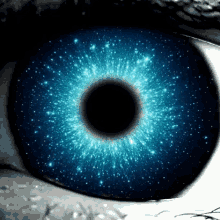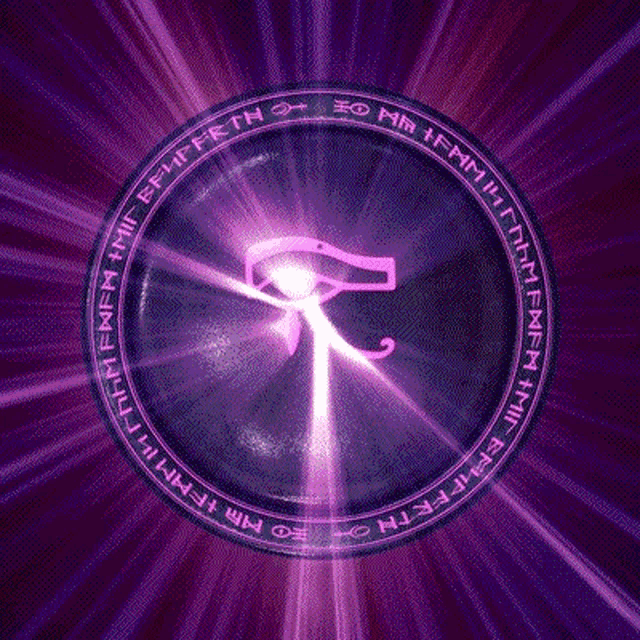The Heavenly Nile within the Horus-Eye
The sun-cult of Ancient Egypt can be seen in a water-perspective, as the sun being the precursoring source of the Nile and hence; all life in the land of the black slit. The transformation of the life-giving waters was first and foremost a change from a rain ideology to a river ideology. Contrary to what one could have expected, with this change the river god remained celestial rather than became terrestrial: Horus as the former sun-god incorporated all of the river ideological qualities and capacities in the form of the sun. The images of the divinities continued, but their contents and cosmic functions changed. The Nile was the every foundation of the Egyptian civilisation, but it did not become a “traditional” river god or goddess such as Ganges because the life-giving water was assimilated into an older, celestial and divine Parthenon: Ra or the Sun God.
One of the original and oldest myths in the Egyptian mythology is the battle between the gods Horus the Elder and Seth concerning the life-giving waters, or, vital fluids. Originally, Seth was a rain and storm god– “a god of the blessed yet dangerous storms” (Bell, 1971) and Horus was a sun-god. The foundation of the Egyptian civilisation coincided with the end of the Neolithic Wet Phase (around 3000 BCE), which was a rainy interlude. As the rain became rarer with the decline of the NWP, everything from the desert became sinister to the peasants, and Seth eventually became the personification of of drought, as in evil, whereas all evoluting life became dependent upon the river instead of rain. In the mythology, seen as ideology, this is described as a battle between Seth and Horus.
Seth stroke and violated Horus and snatched one of his eyes. Horus grabbed one of Seth’s testicles and made him impotent. Seth as an original rain-god seems to have lost his powers which literally were in the hands of Horus. Thus, there took place of change between the gods who possessed the life-giving waters. The old rain-god was replaced by Horus for whom the Solar Eye was the most prominent symbol, and “there is sufficient to show that the fertility duties of the Pharaohs were double ones, originally concerning the rain but later the Nile” (Wainwright, 1938). Seth was pacified and Horus had gained the former rain-gods’ power, but only after he regained his wounded Eye. After the Eye was injured it was filled up, and consequently, all the former rain-water was now contained in Horus’ Eye as the river Nile.
Thus, there has been a transformation and transfiguration of power, and what was at stake in the feud between Seth and Horus was the life-giving waters – rain or river – and consequently the life and prosperity for all of Egypt. A common theme throughout Egyptian mythology is therefore that the Eye or the sun-disk contained the life-giving waters and the Nile’s grand-divine inundation. Moreover, the outcome of the mortuary cult was “The utilitarian provision of rain, a “Nile in the sky”, as in the Pyramid Texts (668) bein said;
“My water is in the sky…,”.
In the later mythological feud between Seth and Osiris, Seth killed Osiris, but Horus avenged his father and killed Seth. Osiris was rejuvenated through Horus’ Eye;
“…I bring to you the Eye of Horus, that your heart may be refreshed possessing it” [Pyr. 22],
and the Eye contained the life-giving waters, incorporated in total unity with the accepted self reborn through the internal fluids in celestially orchestrated harmony and flow.
Seth inflicted a wound on Osiris’ leg from where the annual inundation poured out, and the leg was connected with Elephantine;
“O King, receive this pure water of yours which issued from Elephantine, your water from Elephantine…” [Pyr. 864].
In this period, Elephantine was one of the most important religious places in the First Cataract region, as it was the place representing the Nile flood flowed out from the netherworld, emerging from the leg(s) or from under the sole of the feet of Osiris. A descending purification royally represented by Nekhbet, the diving vulture, crossing and contrasting the risen cobra piercing through the fore- of the diadem;
Together being Nebty and the protectress’ of their divine child.
Thus, the Nile had cosmologically its origin in Nun, the primeval waters, connecting the celestial waters with the terrestrial waters, through Horus’ Eye insighted and self-ignited.

